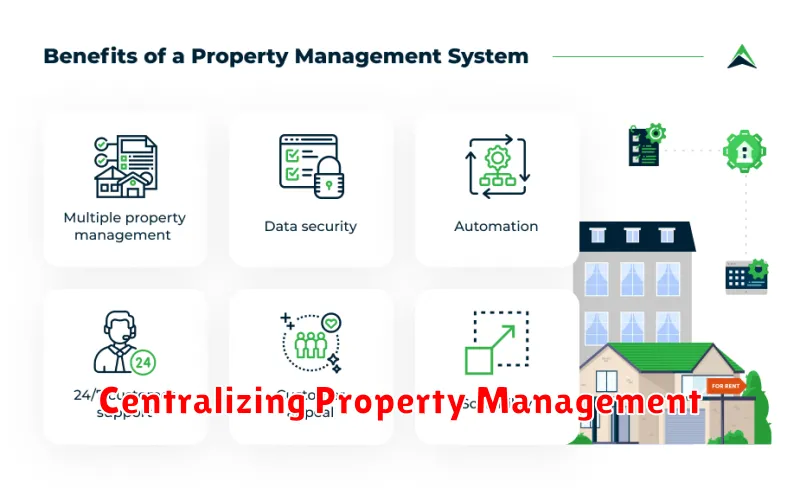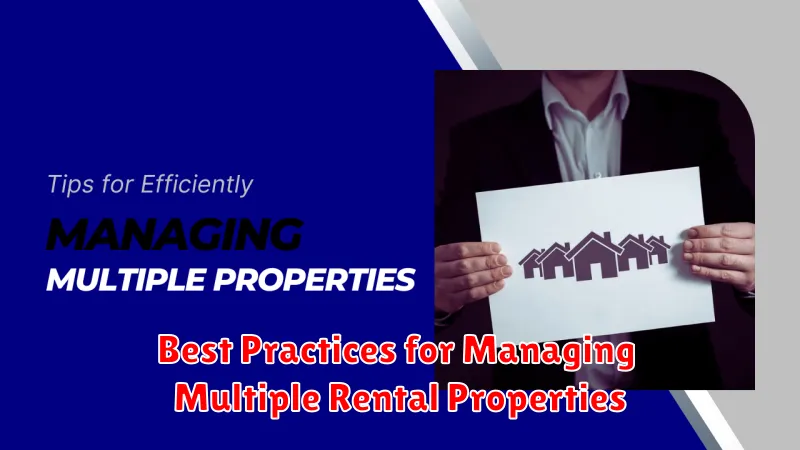Managing multiple rental properties can be a lucrative venture, but it also presents unique challenges. Successfully navigating the complexities of multiple leases, tenant communication, property maintenance, and financial record-keeping requires a strategic approach. This article outlines best practices for managing multiple rental properties, offering valuable insights for both seasoned investors and those just starting to expand their real estate portfolios. From streamlined communication strategies to efficient maintenance systems, discover how to optimize your operations, maximize your return on investment, and minimize the stresses associated with managing multiple properties.
Whether you’re juggling two units or a dozen, implementing effective management strategies is essential for long-term success. This guide will delve into the core principles of successful rental property management, covering topics such as tenant screening, lease agreements, rent collection, legal compliance, and property marketing. Learn how to leverage technology, establish clear processes, and build strong relationships with both tenants and vendors to create a thriving and sustainable rental business. By adopting the best practices detailed here, you can effectively navigate the complexities of managing multiple properties, minimize vacancies, and ensure a positive cash flow.
Centralizing Property Management

Managing numerous properties effectively requires a centralized approach. This involves consolidating key aspects of your operations into a single, organized system. This can significantly streamline your workload and improve overall efficiency.
Consider centralizing the following:
- Communication: Use a single platform for tenant inquiries, maintenance requests, and other communications.
- Finances: Manage all income and expenses through a central accounting system. This allows for accurate tracking and simplified reporting.
- Maintenance: Track maintenance requests, schedule repairs, and manage vendor relationships from a central hub.
- Document Management: Store leases, inspections, and other important documents in a secure, accessible location.
By centralizing these core functions, you can gain a clearer overview of your portfolio’s performance and make more informed decisions.
Efficient Communication with Tenants
Clear and consistent communication is crucial for effectively managing multiple properties. Establishing preferred communication methods from the start helps streamline interactions. While some tenants may prefer phone calls, others might favor email or text messages. Respecting these preferences fosters a positive landlord-tenant relationship.
Using a centralized communication system can significantly improve efficiency. This allows you to track conversations, schedule reminders, and maintain a comprehensive record of all tenant interactions. Such organization prevents miscommunication and ensures timely responses to tenant inquiries.
Providing clear guidelines regarding communication protocols, such as expected response times, further enhances efficiency. This sets expectations for both parties and helps prevent misunderstandings.
Utilizing Technology and Automation
Managing multiple properties can be significantly streamlined with technology and automation. Property management software helps centralize operations, from listing vacancies and screening tenants to collecting rent and tracking expenses. This reduces manual workload and potential errors.
Automated rent collection platforms ensure timely payments and minimize late fees. Consider integrating accounting software to further automate financial reporting and analysis.
Smart home technology can enhance property value and streamline management. Smart locks facilitate keyless entry for showings and maintenance, while smart thermostats provide remote control over energy consumption.
Hiring Reliable Maintenance Teams
Effectively managing multiple properties requires a dependable maintenance strategy. Proactive maintenance prevents costly repairs and tenant dissatisfaction. One of the best approaches is building a reliable maintenance team.
Finding qualified professionals is crucial. Look for licensed and insured contractors with a proven track record. Obtain multiple bids for larger projects to ensure competitive pricing. Clear communication is key. Establish preferred communication methods and response time expectations.
Consider assembling a team with diverse skill sets, including plumbers, electricians, and general handymen. This allows you to address a range of maintenance needs efficiently. Regularly evaluate the performance of your maintenance team to maintain high standards and address any issues promptly.
Streamlining Financial Tracking
Effectively managing multiple rental properties requires diligent financial tracking. A centralized system is crucial for organizing income and expenses. This simplifies tax preparation and provides a clear overview of your investment performance.
Utilize property management software or dedicated spreadsheets to record all transactions. Categorize expenses meticulously, differentiating between operating expenses (e.g., repairs, property taxes) and capital expenditures (e.g., property improvements). Accurate record-keeping is essential for informed decision-making and financial analysis.
Regularly reconcile bank statements with your records to ensure accuracy and identify any discrepancies promptly. Generate financial reports, such as profit and loss statements and cash flow statements, to monitor the performance of each property and your overall portfolio.
Staying Compliant with Local Laws
Managing multiple properties across different jurisdictions necessitates a thorough understanding of varying local laws. Non-compliance can lead to substantial penalties and legal issues.
Key areas to focus on include:
- Lease agreements: Ensure your leases comply with local regulations regarding terms, disclosures, and tenant rights.
- Safety regulations: Regular inspections and maintenance are crucial for meeting fire, safety, and habitability standards.
- Discrimination laws: Adhere to fair housing practices in tenant selection, advertising, and property management.
- Rent control ordinances: Understand and comply with any local rent control or stabilization policies.
Consult with legal counsel specializing in real estate to ensure your practices are compliant with all applicable laws.
Building Long-Term Tenant Relationships
Cultivating positive, long-term tenant relationships offers significant advantages for managing multiple properties. Reduced vacancy rates and lower turnover costs are key benefits. Long-term tenants provide consistent rental income and minimize expenses associated with advertising, cleaning, and property preparation.
Clear and consistent communication is essential. Respond promptly to tenant inquiries and maintain open lines of communication regarding property matters. Proactive maintenance also plays a crucial role. Addressing repairs quickly and efficiently demonstrates care for the property and the tenant’s well-being.
Treating tenants with respect and fairness fosters a positive landlord-tenant dynamic. This can lead to increased tenant satisfaction and a higher likelihood of lease renewals. Consider offering incentives for lease renewals, such as small rent reductions or property upgrades, to further encourage long-term tenancy.

